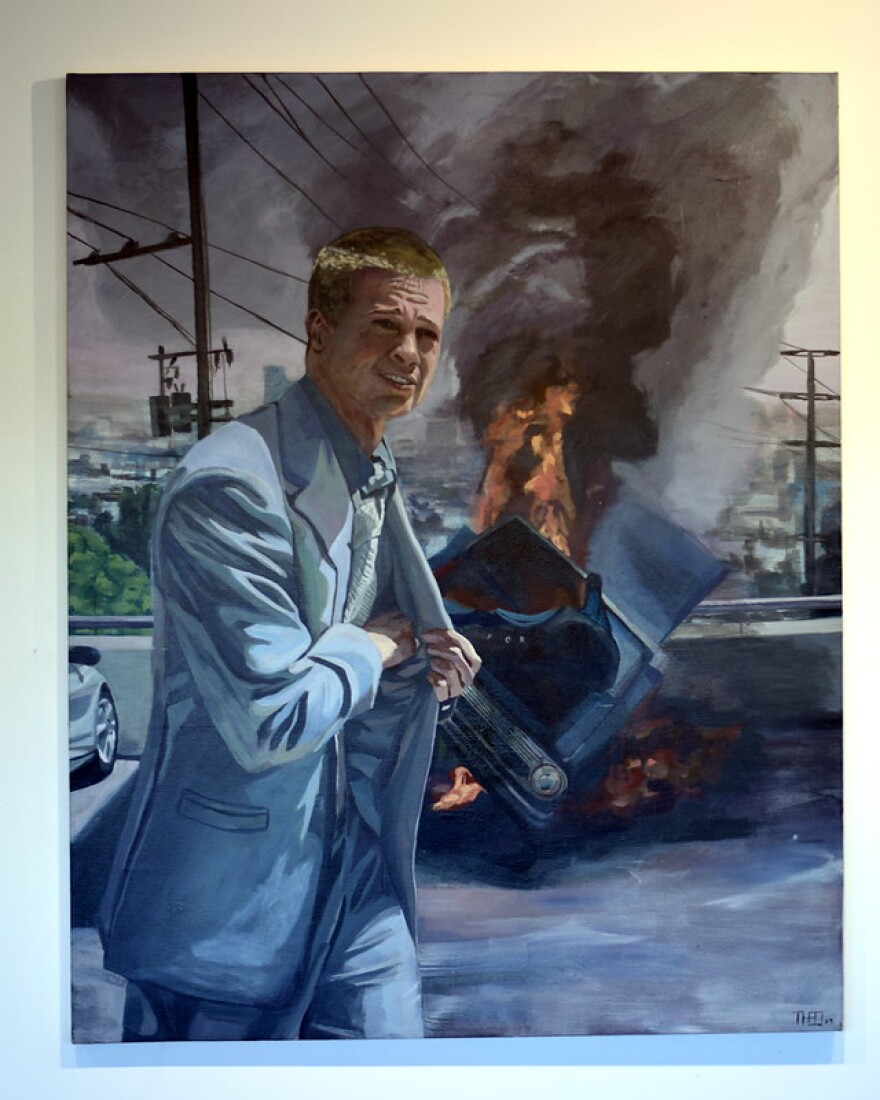Influenced by the digital realism that shapes modern life, Theo Osborn’s artwork is steeped in humor.
Hailing from Sacramento, Calif., Osborn picked up a paintbrush at the age of four.
“It's kind of allowing for more of a polarization in some senses, and I think there's a lot to talk about that we can really be using art to our advantage, because it's quite often swept under the table, how powerful art can really be in opening people's perspectives.”— Theo Osborn, artist
With doubts about its sustainability, the childhood dream of painting faced a brief moment of uncertainty, but his passion kept him moving forward.
“During high school I started this mentorship program, and I was able to see how a working artist operates,” Osborn. “It was possible.”
Osborn is a recent graduate from Chico State with a Bachelor of Fine Arts, and he’s currently exhibiting his work for a third time at the 1078 Gallery.
“I love realism. It's very satisfying to get something looking realistic, but I'm more interested in portraying digital imagery,” Osborn said.
The display showcases his latest work, which explores the chaos, danger and humor of the digital realm through reproductions of digital collages created from internet imagery.
Osborn has noted an increasing tendency among his peers to transfer digital images onto traditional art forms, such as painting, printmaking and ceramics.

He says transforming fleeting digital moments into permanent physical forms can create an impactful experience.
“It's really quite powerful to see these images that we only see for glimpses of a second on something that you know is permanent,” Osborn said.
Osborn says he’s confused as to why he’s often labeled a contemporary artist, finding the term too broad to define his stylistic elements.
“That's such a blanket term, you can't really pin down any sort of stylistic parts of your art, so I would like to coin it as digital realism,” Osborn said.

Osborn aims to spark dialogue about the internet's impact through his collaged imagery.
Some of the discussion centers on the conceptual aspects of the rise in AI-driven misinformation and the surge of political extremism online, examining how these elements contribute to the perception that extreme viewpoints are widely held.
“It's kind of allowing for more of a polarization in some senses, and I think there's a lot to talk about that we can really be using art to our advantage, because it's quite often swept under the table, how powerful art can really be in opening people's perspectives,” Osborn said.
One of his most popular paintings is "Trumala," which depicts President Donald Trump and former Vice President Kamala Harris in a kissing embrace.
This piece, created before the election, sparked considerable discussion that led to questions about where Osborn leans politically.
“I'm constantly in a battle between painting things for aesthetic versus painting things that I'm upset about."— Theo Osborn, artist
“They'll see that one, and just because I painted Trump, they'll kind of get this notion that I'm right-wing, and that's so interesting, because it's just an image of Trump and Kamala kissing and that kind of imagery, it's so powerful,” Osborn said.
Osborn photoshopped both figures together and says this imagery is perhaps reminiscent of something that might already exist in the digital sphere.

“The thing is people believe anything, and some people will see something real and think it's AI, and that is just so crazy to me that we're already at this point,” Osborn said.
However, his work isn't solely defined by paranoia and conspiracy. He draws inspiration from diverse online sources, with his collection featuring internet-inspired imagery such as Brad Pitt in “Ocean's Twelve.”
“I'm constantly in a battle between painting things for aesthetic versus painting things that I'm upset about,” Osborn said, while laughing.
Although some of his work prompts conversation about the effects media has on us, ultimately Osborn wants what many artists want — for you to pause and take a moment to view the work.
“I don't expect anybody to go to my art show and have their minds blown or changed,” he said. “But just like that bit of a pause. I feel it's very rewarding, just to look at what images I'm painting and like, you're like, ‘Oh, why did he do that?’ That's all I'm really looking for.”



